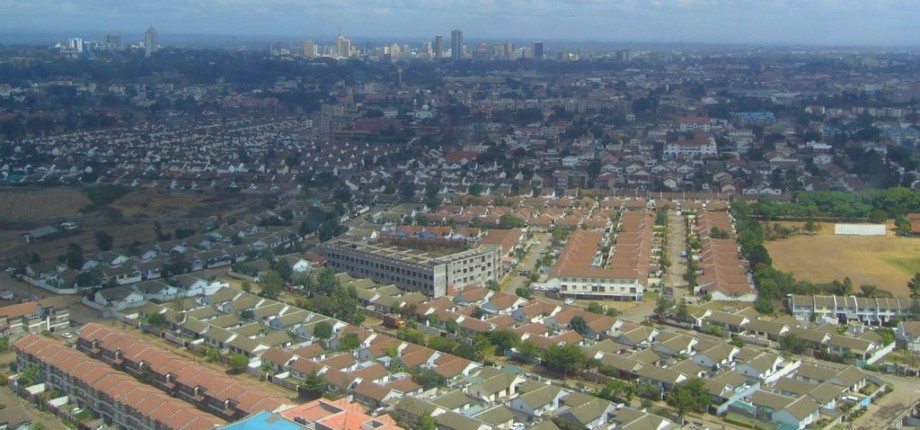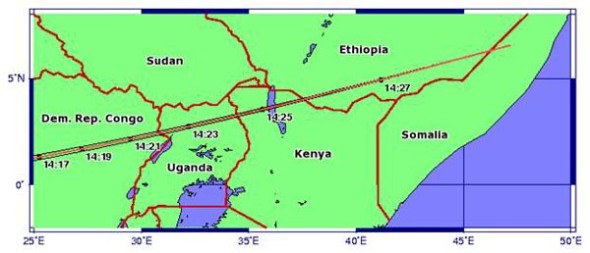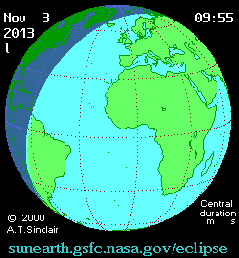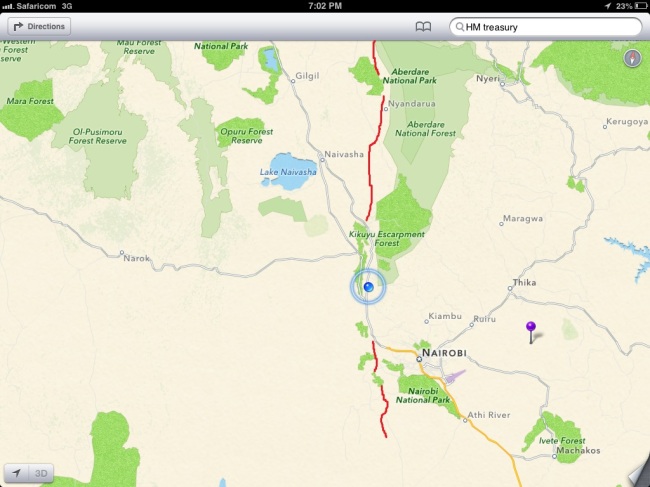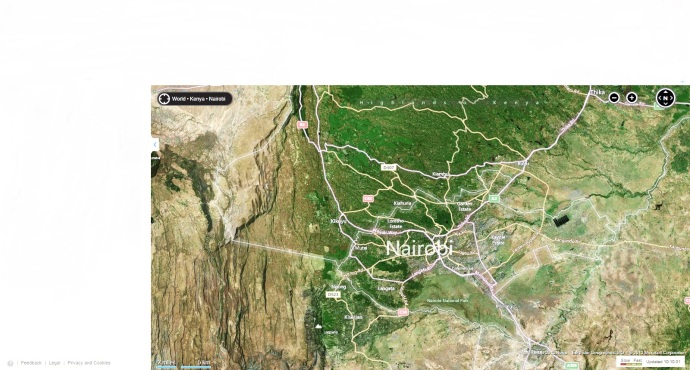By Don Pablo
After months of grey skies that inhibited views of the cosmos for earthlings in this part of the world, the clouds have finally dispersed. As we approach summer, the clear skies come bearing gifts for sky gazers to make up for the lost months. It’s late October in Nairobi and a lot is happening in the sky. Between now and the solstice on December 21st, sky gazers in Kenya will see the brightest planet in the solar system reaching its pinnacle in brilliance, a solar eclipse and a potentially super bright comet.
As if sensing the astronomical thirst we have had to endure, the skies have wasted no time in putting up a show for us. Planet Venus has been lighting up the sky as it beams mightily in the west at dusk, living up to its ‘evening star’ moniker. The evening star is the brightest planet visible from earth and the third brightest celestial body after the sun and moon. Venus dominates the western sky and is visible for two hours after sunset before setting in the western horizon. That it’s visible in the early evening sky makes it particularly easy to view.
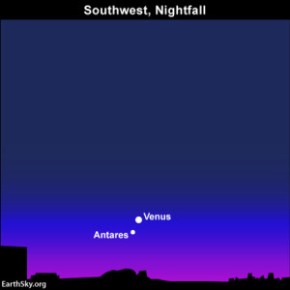
Position of Venus in the evening sky. Antares is the brightest star in the Scorpius constellation (c/o earthsky.org)
Venus has been visible for the better part of the last three months. It was particularly dazzling three nights ago when perched right at the ‘tail’ of the Scorpius constellation, one of the twelve constellations of the Zodiac. Identifying Venus should help you see the Scorpius constellation given their proximity at this particular time in this part of the world. As you can tell from the name, the Scorpius constellation resembles a scorpion as shown in the image below.
Having curtain raised for its more illustrious celestial bodies, Venus leaves the stage for the Sun and Moon to enchant us. On the 3rd of November, the moon will pass between the Earth and the Sun, partially blocking out the Sun and putting on a spectacular celestial show for people who are in the right place to see it. This particular solar eclipse has received a lot of coverage in Kenya and rightly so. The Turkana region offers some of the best views of the eclipse anywhere in the world.
When the Moon passes directly between the Sun and Earth, the usual outcome is either a total or partial solar eclipse. But the event on November 3rd is something of a hybrid. A hybrid solar eclipse occurs when the Moon is almost too close to the Earth to completely block the Sun. This type of eclipse will appear as a total eclipse to some parts of the world and will appear as a partial eclipse to others.
The eclipse path will begin in the Atlantic Ocean off the eastern coast of the United States and move east across the Atlantic and across central Africa.
Totality will be visible only from a narrow track of earth, stretching from Gabon in the west to Kenya and Ethiopia in the east. In this very narrow path across Africa, there will be a total eclipse when the moon covers the sun completely, with darkness descending and the stars coming out! In every other place of Africa beyond that narrow band of totality, everyone will see a partial eclipse including folks in Nairobi and Mombasa.
Kenya will be a particularly popular destination for astro tourists seeking to enjoy this rare occurrence. While the eclipse duration locally is only 11 seconds or less (compared to more than a minute in Gabon), the northwest region of Kenya has excellent weather prospects with clear skies expected.
(Please note that it is dangerous to look directly at the sun without the aid of a solar filter to block the sun’s harmful rays. It may cause “eclipse blindness,” a serious eye injury that can leave temporary or permanent blurred vision or blind spots at the center of your view. If you cannot access a solar filter, try get your hands on a welder’s protective glasses. Used camera films aren’t of much help so you might want to reconsider using that as well).
Fast forward to November 28th and newly discovered comet ISON will make its closest approach to the sun. If the comet survives its encounter with the sun, it could be one of the brightest comets in recent memory. Some astronomers estimate that it could even be bright enough to be seen during the day!
The big question mark however is whether the comet will stay intact, or shatter in spectacular fashion. If the comet survives, it will be visible in the early morning and early evening sky and could be nearly as bright as the full Moon. Some astronomers are already calling it the comet of the century.
The end of the year marks the beginning of summer in the Southern hemisphere. On December 21st, the South Pole of the earth will be tilted toward the Sun, when it ‘reaches’ its southernmost position in the sky and will be directly over the Tropic of Capricorn at 23.44 degrees south. This is the first day of winter (winter solstice) in the Northern Hemisphere and the first day of summer (summer solstice) in the Southern Hemisphere.
Given our position on earth, we are lucky enough to witness some spectacular celestial events in the coming weeks. If you are lucky enough to be able to travel to Turkana, savour the moment and please share your pictures and experiences with us. If you can’ travel to Turkana, you can enjoy the sights from the relative comfort of the home. Wherever you may be, enjoy these sensory delights and marvel at the wonders of the universe.
